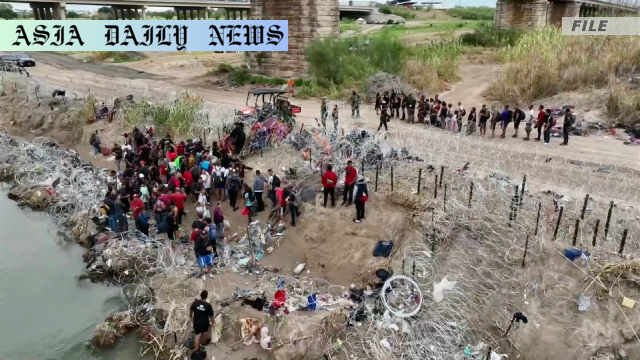Immigration: The Trump administration arrests 538 illegal immigrant criminals, focusing on sanctuary cities like Boston and New York.
- Trump administration arrests 538 illegal immigrants in a major operation.
- Sanctuary cities like New York and Boston were key targets.
- Detained individuals include gang members, a suspected terrorist, and sex crime offenders.
- Trump highlights plans for mass deportation of criminal immigrants.

Introduction to the Recent Immigration Crackdown
In a strategic move to address illegal immigration, the Trump administration announced the arrest of 538 illegal immigrant criminals in an operation targeting sanctuary cities across the United States. White House spokesperson Karoline Leavitt emphasized that these arrests include individuals accused of severe offenses such as terrorism, gang violence, and sex crimes against minors. This signifies a milestone in the administration’s stringent immigration policies.
Targeting Sanctuary Cities
One key element of this extensive operation was the focus on sanctuary cities—urban areas that limit cooperation with federal immigration enforcement authorities. Major cities, including New York and Boston, became focal points of this effort. By concentrating on these areas, the administration sought to address regions where illegal immigrants often find refuge. The arrests predominantly targeted criminals whose presence posed significant risks to public safety.
The Arrest Details
Among the detained individuals were members of a notorious Venezuelan gang, a suspected terrorist, and individuals convicted of crimes such as child sex offenses. According to White House reports, a member of a Haitian gang arrested in Boston was notably vocal, expressing disdain for the Trump administration’s policies. These law enforcement efforts reflect the government’s commitment to upholding public safety and national security.
The Larger Picture
Beyond arrests, the Trump administration has initiated mass deportations via military aircraft, marking what they describe as the largest deportation operation in history. This aligns with Trump’s broader objective, expressed in his inaugural address, to deport millions of illegal immigrants with criminal histories. Officials argue that this approach is necessary to safeguard American communities while deterring illegal immigration.
Public Reactions
The crackdown and related policies have drawn mixed reactions from the public. Supporters applaud the administration’s dedication to law enforcement and its efforts to protect communities from criminal activities perpetrated by illegal immigrants. However, critics argue that these measures could instigate fear within immigrant communities and harm America’s image as a land of opportunity and refuge.
Ongoing Challenges
While significant progress has been made, the United States continues to face challenges in addressing immigration concerns. Sanctuary cities remain a contentious issue, with proponents arguing for the protection of immigrant rights and opponents emphasizing public safety. The administration’s hardline stance serves as a reminder of the complex dynamics surrounding immigration policy in the 21st century.
Conclusion
The recent arrests and deportations spearheaded by the Trump administration underscore the government’s resolve to address illegal immigration comprehensively. This operation represents a decisive effort to ensure national security and uphold the rule of law. As the political and social implications of such policies unfold, the importance of balanced, humane immigration reform remains a pressing issue for policymakers and citizens alike.



Commentary
The Complexity of Immigration Policy
Immigration remains a deeply complex and divisive issue in the United States. With the Trump administration’s recent crackdown, including the arrest of 538 illegal immigrant criminals, the nation once again finds itself embroiled in debates over public safety, national identity, and the rights of immigrants. While it is undeniable that actions must be taken to address criminal activities, the method and scope of such measures are often subject to scrutiny.
Balancing Justice and Compassion
On one hand, the administration’s efforts to prioritize public safety by apprehending dangerous individuals, including gang members and terrorists, are commendable. Protecting citizens should remain a top priority for any government. However, the broad categorization of all illegal immigrants as criminals and the heavy-handed approach adopted in sanctuary cities raise concerns. Immigrant communities, many of whom are law-abiding individuals seeking better lives, may feel disproportionately targeted by these measures.
The Debate on Sanctuary Cities
Sanctuary cities have become a battleground for contrasting views on immigration. Supporters argue that they provide safe havens for undocumented immigrants who contribute to society without fear of deportation. Opponents, like the Trump administration, see these cities as obstacles to effective law enforcement. Finding common ground in this debate is critical to ensuring both public safety and the protection of immigrant rights.
Conclusion: A Need for Unified Solutions
As the nation navigates these turbulent issues, it is imperative to approach immigration reform holistically. Combining legal enforcement with compassionate policies can foster a balanced system that protects citizens while honoring America’s heritage as a nation of immigrants. The path forward requires unity, empathy, and pragmatic solutions that benefit all members of society.